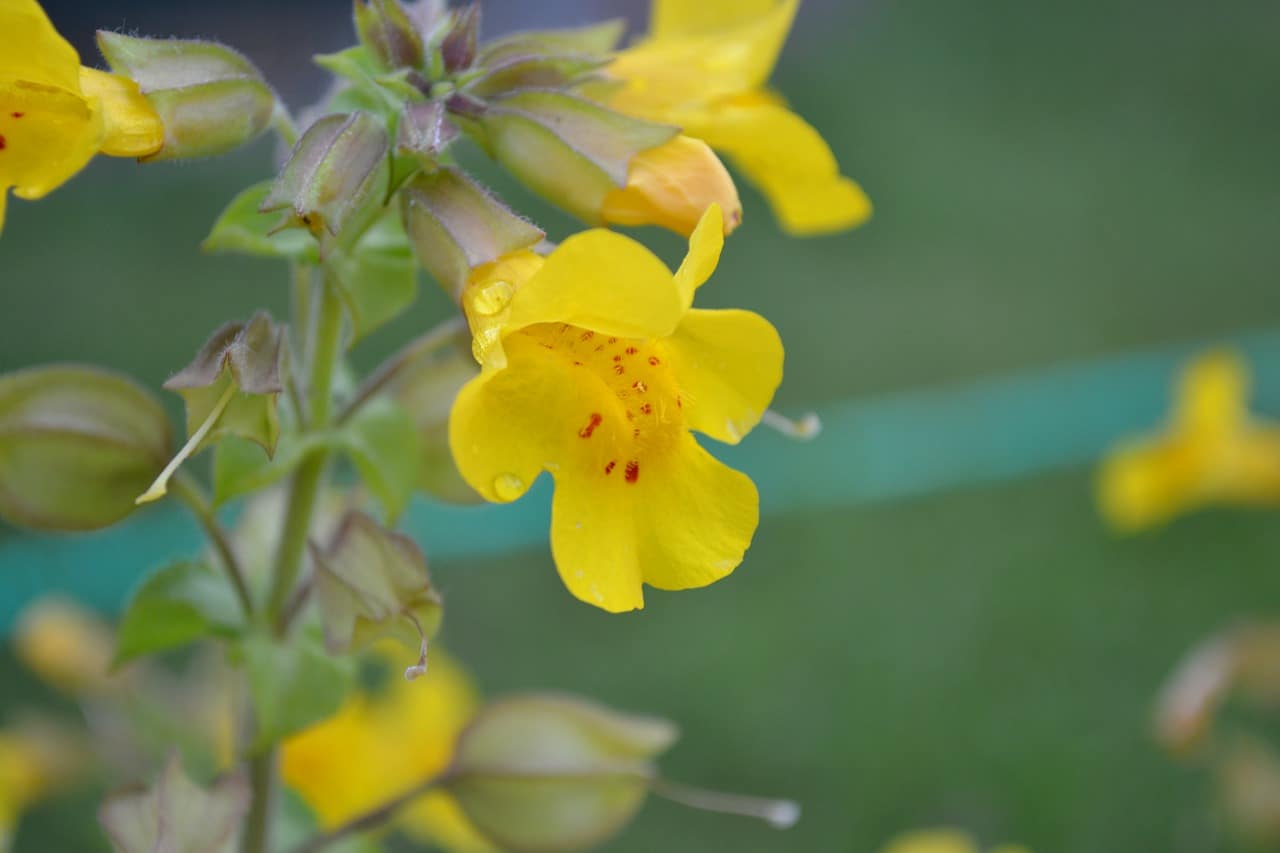Learning how to grow Mimulus is as simple as two steps, and you can enjoy having these unique-looking flowers in the garden. Mimulus even attracts pollinators, so you are not only adding aesthetic value to the garden. It’s no secret that Mimulus is taking the attention of gardeners and scientists alike, and growing it can both be a stress-releasing hobby and profitable endeavor.
While the Mimulus plants are diverse, you won’t find much information in growing this unusual species. The good news is that cultivating Mimulus is relatively easy, and you can use a greenhouse to create vigorous plants. Starting plants in the greenhouse should help gardeners in challenging regions to overcome problems and grow unique flowers like the Mimulus without drawbacks.

How To Grow Mimulus For Success
Step #1. Starting seeds
Mimulus or monkeyflowers have other propagating methods, and you can also root them from cuttings. However, these plants are not that easy to find, let alone have someone to provide you cuttings. Therefore, it’s highly likely that you will start Mimulus flowers from seeds.
Sowing
As with other plants, you can choose to start Mimulus seeds indoors as a safety measure. The greenhouse’s controlled environment can also guarantee germination because you avoid the challenges from the harsh climate. Sow the seeds early in spring or late winter in a moist, well-draining seed-starting mix.
You don’t need to cover the seeds with the mix, but make sure that the medium is damp and not soggy. Place the container somewhere warm and bright but out of direct sunlight. You can also cover it with plastic wrap loosely to create an ideal environment for germination.
Germinating
Mimulus seeds should sprout within one to three weeks, and you can remove the cover once this happens. Maintain moisture to support growth, but be careful not to overwater your plants. You can then separate them after some time and transplant in a mix of potting soil and seed-starting mix.
Step #2. Transplanting
Once your seedlings have grown, you must gently harden them to get them acclimated to the outdoor conditions. This is crucial before their permanent transplanting to avoid the risk of transplant shock. Each day, you can gradually expose the seedlings outdoors until the danger of frost has passed.
An area that receives partial sun with moist soil should be ideal for Mimulus seedlings, and you can have them with a space of 6 inches in between. Experienced gardeners also recommend pinching the tips of Mimulus plants because this encourages branching. Over time, you can also remove the faded flowers to promote a healthy bloom.
Caring For Mimulus
Location
The emphasis is necessary for studying the specific needs of your Mimulus species. For example, there are types of Mimulus plants that are meant to grow well in dry locations. Therefore, transplant them in an area with sandy but well-draining and aerated soil.
On the other hand, some species prefer a medium that holds moisture for a long time. With this in mind, you may need to create a mix with peat moss to provide your Mimulus plant’s needs. This is also the case in choosing a location where some species prefer full sun, but others will be better in partial shade.
Lastly, check where your species are native in. This way, you can use a greenhouse, if necessary, to provide the plants their ideal temperature and humidity. Remember that Mimulus plants are diverse, and they range from spring-loving to summer-loving species.
Watering and feeding
As mentioned earlier, learning the preference of your species is optimal to avoid drawbacks in growing Mimulus. This is also applicable to watering and feeding because you want to mimic the natural conditions they thrive with in nature. Some species prefer occasional watering; some Mimulus plants require consistent moisture.
More so, you may not need to fertilize these plants as long as they are in fertile and good-quality soil. Otherwise, you can use water-soluble or slow-release fertilizers and follow their label instructions. For the former, you can feed every two weeks in the growing season, while the latter is best to use only once during the growing season.
Common problems
The fantastic thing with Mimulus is that it is not prone to severe problems. However, it would be best if you always were diligent in constantly checking and maintaining the plants’ proper practices. If you encounter pests like aphids, you can quickly eradicate the problem with insecticidal soap.
Conclusion
Mimulus is one of those flowers that will surely capture your attention due to its unique patterns. Learning how to grow Mimulus is even relatively straightforward, so you might as well have these gorgeous flowers in your garden. You can start Mimulus from cuttings, but those who don’t have existing plants shouldn’t be intimidated in sowing Mimulus seeds.
Take advantage of a greenhouse and guarantee quick germination. There are no unique methods when germinating Mimulus seeds. The main takeaway here is maintaining moisture, avoiding overwatering, and choosing a location that protects the seeds from harsh conditions.
Once you have the seedlings, you can harden them before transplanting outdoors. Choose an area with partial sun and pinch the tips of your plants to encourage branching. Over time, remove the faded flowers to maintain a healthy bloom on your Mimulus.
